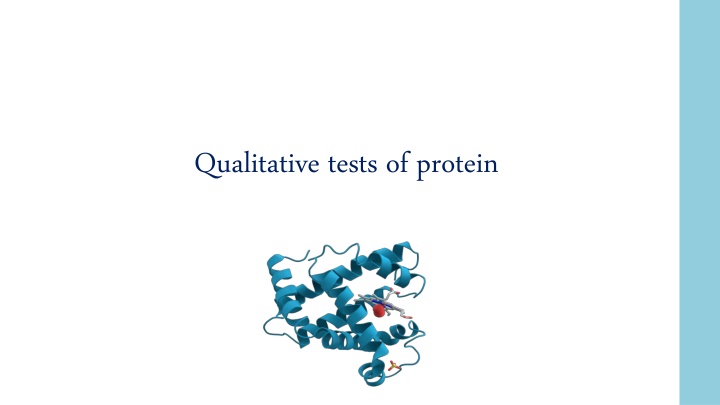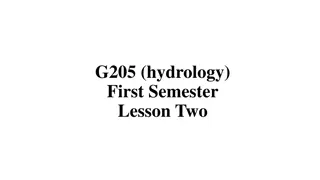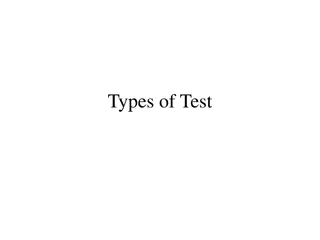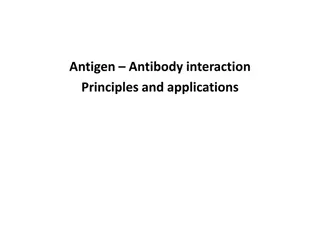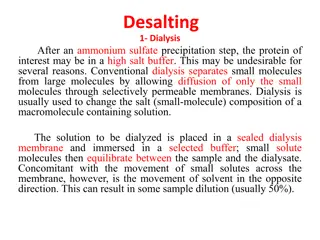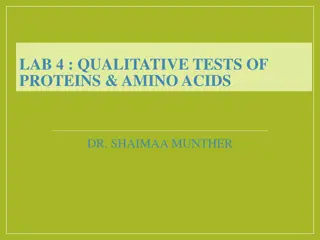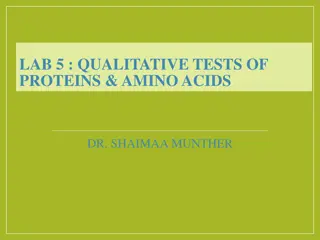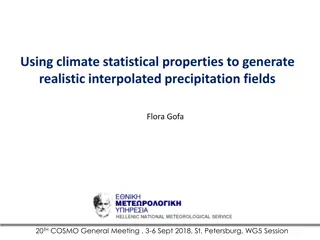Protein Qualitative Tests and Precipitation Methods
Qualitative tests of proteins involve reactions producing colored products, such as the Biuret test specifically detecting peptide bonds. Protein precipitation methods are used for concentration and purification, affected by factors like pH, temperature, salts, and heavy metals. Different techniques like salt concentration effects and protein denaturation play roles in these processes.
Download Presentation

Please find below an Image/Link to download the presentation.
The content on the website is provided AS IS for your information and personal use only. It may not be sold, licensed, or shared on other websites without obtaining consent from the author.If you encounter any issues during the download, it is possible that the publisher has removed the file from their server.
You are allowed to download the files provided on this website for personal or commercial use, subject to the condition that they are used lawfully. All files are the property of their respective owners.
The content on the website is provided AS IS for your information and personal use only. It may not be sold, licensed, or shared on other websites without obtaining consent from the author.
E N D
Presentation Transcript
Certain functional groups in proteins can react to produce characteristically colored products. -The color intensity color intensity of the product formed by a particular group varies among proteins in proportion proportion to the number of reacting functional or free groups present and their accessibility to the reagent.
Biuret test Biuret test: This test is specific for the peptide bond this test. Objective: Objective: detect the presence of peptides or proteins in a sample. peptide bond. Substances containing not less than two peptide linkages give Principle: Principle: When proteins and peptides (i.e peptide bonds) treated with an alkaline sulfate a violet color is formed . A positive test is indicated by the formation of a violet color alkaline solution of dilute copper violet color. Note: Note: the color density is proportional proportional to amount of proteins present. * biuret reagent biuret reagent is alkaline copper sulfate solution.
Method: Method: 1- Add 2ml of protein Albumin 2- Add 1 ml of biuret reagent and mix well. Result: Result: https://encrypted-tbn3.gstatic.com/images?q=tbn:ANd9GcT1sz0mN0h9Y4Fpri5ndOSG6mYc9fM3draaEKkxQmrfrpY3Vqxu
Protein precipitation Protein precipitation Is widely used in downstream processing of biological products in order to concentrate proteins and purify them from various contaminants. The solubility of proteins solubility of proteins is affected by pH, temperature, salts, heavy metal salts etc. Which sample would you rather inject?
1.Effect of salt concentration on the protein solubility 2.Precipitation of proteins by acids. 3. Precipitation of protein by salts of heavy metals. 4. Protein denaturation.
1 1.Effect of salt concentration on the protein solubility: .Effect of salt concentration on the protein solubility: Objective: Objective: to investigate the effect of different salt concentration on protein solubility. Principle: Principle: The low salt concentration low salt concentration solutions make protein solubility easier functional groups of the protein (salting in On contrast, high salt concentration high salt concentration or solids dissolved in the reaction medium up till saturation solutions causes the protein to precipitate s precipitate since salt ions, in this case, compete with the protein molecules in binding water molecules (salting out salting out). solubility easier using the attraction of salt ions to the salting in). So the salt it just cause protein dehydration Note: Note: Each protein can be precipitated at specific salt concentration. protein dehydration. e.g (NH4)SO4 There is inverse relationship inverse relationship between the Mw of protein and the concentration of salt) High High Mw need low low concentration salt ( low percentage of saturation) Low Low Mw need high high conc. of salt ( High percentage of saturation)
Egg Proteins: Egg Proteins: Albumin Albumin and globulin Separated by centrifugation at 3000 for 20 min. The albumin albumin is the supernatant supernatant because it is has low Mw precipitate which is higher Mw higher Mw than albumin. globulin low Mw. and globulin globulin is the
+ 50% saturated (NH4)2SO4 No precipitation + NaCl (low salt concentration Globulin dissolves (salting in) Albumin has low MW so it need higher salt concentration to precipitate + 50% saturated (NH4)2SO4 + 100% saturated (NH4)2SO4 Globulin precipitate (salting out) Globulin has high MW so it precipitate at lower salt concentration Albumin precipitate (salting out) Albumin has low MW so it precipitate at high salt concentration
Method: Method: T1 T2 T3 Take your globulin sample Take 2 ml of your albumin sample Take your T2 tube Add 4 ml of NaCl solution to your globulin tube Slightly add 1 ml of 50% saturated (NH4)2SO4 solution Add a few amount of 100% solid (NH4)2SO4 Shake it well and write your observation record your observation . Shake it well and write your observation Result: Result: Tube Observation Comment Globulin + NaCl Albumin+50% saturated (NH4)2SO4 (Albumin+50% saturated (NH4)2SO4 ) + 100% saturated (NH4)2SO4
2 2.Precipitation of proteins by acids: .Precipitation of proteins by acids: Objective: Objective: To investigate the effects of strong acids on the protein solubility. Principle: Principle: This test depend on affecting solubility of the protein as a function of changes in pH. In highly acidic media media, the protein will be positively charged, which is attracted to the acid anions that cause them to precipitate. acidic
Method Method A B In a test tube, put 3ml of conc. nitric acid carefully Put 3 ml of the albumin solution Precipitation of albumin using Trichloroacetic acid [TCA] Using a dropper add to (albumin) on the inner wall of the tube to form a layer up the acid add 5-7 drops of T.C.A solution carefully Record your observation Record your observation Result: Result: Tube Observation Comment Precipitation of albumin using concentrated nitric acid. Conc. HNO3 + Albumin Albumin + TCA
3 3. Precipitation of protein by salts of heavy metals: . Precipitation of protein by salts of heavy metals: Heavy metal salts Heavy metal salts usually contain Hg+2, Pb+2, Ag+1 Tl+1, Cd+2 and other metals with high atomic weights. Since salts are ionic they disrupt salt bridges in proteins. The reaction of a heavy metal salt with a protein usually leads to an insoluble metal protein salt. Objective: Objective: to identify the effect of heavy metal salt on protein. Principle: Principle: -Heavy metal salt will neutralize By the negative charge of protein will bind with positive charge of metal ion . Then the protein will precipitate as insoluble metal protein salt . neutralize the protein:
Method: Method: Result: Result:
4 4. Protein denaturation: . Protein denaturation: Objective: Objective: to investigate the effect of high temperature on protein structure. Principle: Principle: Non-covalent bond can be broken by heating, leading to protein denaturation and the precipitation. Denaturation Denaturation is a process in which the proteins losing its quaternary structure, tertiary structure and secondary structure, by application of some external factor or compound such as a strong acid or base, a conc. inorganic salt, an organic solvent (e.g., alcohol or chloroform), or heat. - without alteration of the molecule's primary structure, i.e., without cleavage of any of the primary chemical bonds that link one amino acid to another.
Method: Method: 1- Take 1 ml of protein Albumin . 2- Place it in a boiling water bath for 5-10 minutes. 3-Remove aside to cool to room temperature. 4-Note the change. Result: Result:
Questions : Questions : Do you think free amino acids will give a positive result with biuret test ? why? What is the least number of amino acids bonded together by peptide bonds that will respond positively to biuret test? After heating albumin at high temperature, does it still biologically active? Why? Can we use salting out method in fractionating mixture of proteins? Explain your result with example.
